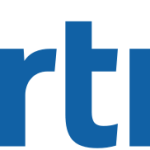- Industry: Consulting
- Number of terms: 1807
- Number of blossaries: 2
- Company Profile:
Gartner delivers technology research to global technology business leaders to make informed decisions on key initiatives.
The precise definition of a functional programming language is often a hotly debated topic among computer scientists, but it is generally accepted that such languages emphasize the value of expressions, rather than the execution of commands. These languages enable the programmer to think like a mathematician by emphasizing data over state. Functional programming techniques (and the supporting languages, e.g., LISP) have existed virtually since the dawn of computer science, but they have been largely overshadowed by imperative languages (e.g., C/C++) within mainstream IT efforts in recent decades. Functional programming has been successfully leveraged in specialized fields for many years—for example, in academia, science and engineering, financial calculation engines, artificial intelligence and development tools.
Industry:Technology
Function points measure the size of an application system based on the functional view of the system. The size is determined by counting the number of inputs, outputs, queries, internal files and external files in the system and adjusting that total for the functional complexity of the system. Function point analysis, originally developed at IBM, has as an advantage its focus on measuring software produced in terms of functionality delivered to the end user, rather than in terms of development deliverables, which have no direct bearing on the end user.
Industry:Technology
Technology for low-cost miniature battery power supplies. As with batteries, fuel cells generate electricity through a chemical reaction. However, fuel cells are recharged by refilling or replacing the chemicals (examples include hydrogen, methyl alcohol or aluminum mixed with oxygen from the air) instead of plugging a charger into a wall socket. Fuel cells deliver energy density many times that of lithium and can power sophisticated devices longer. Choosing a stable fuel source that is safe and readily available and decreasing the size for smaller devices while maintaining efficiency remain challenges.
Industry:Technology
Spread-spectrum transmission technology that enables simultaneous data or voice communications to share the same communication medium by causing transmitting and receiving stations to change the frequency rapidly in a pseudorandom sequence among many discrete radio channels. Transceivers are synchronized using a hopping sequence calculated from a predefined algorithm. This sequence can be adjusted dynamically to avoid other transmissions and interference in the same frequency band.
Industry:Technology
Technique for using a specified range of frequencies more than once in the same radio system so that the total capacity of the system is increased without increasing its allocated bandwidth. Frequency reuse schemes require sufficient isolation among the signals that use the same frequencies so that mutual interference among them is controlled at an acceptable level. For satellites, frequency reuse can be achieved by using orthogonal polarization states for transmission and/or by using satellite antenna (spot) beams that serve separate, non-overlapping geographic regions. See also spot beam.
Industry:Technology
One of three ways of modifying a sine wave signal to make it carry information. The sine wave or “carrier” has its frequency modified in accordance with the information to be transmitted. The frequency function of the modulated wave can be continuous or discontinuous.
Industry:Technology
Radio modulation scheme that defines separate uplink and downlink frequencies, enabling users to transmit and receive simultaneously.
Industry:Technology
The range of frequencies defined and dedicated to a particular type of service or radio technology; a frequency band is usually divided into a number of channels.
Industry:Technology
NTT DoCoMo’s WCDMA cellular service, launched in October 2001, was only the second deployment of its kind in the world — the first being the network of Manx Telecom on the Isle of Man.
Industry:Technology
“Free cooling,” refers to any technique used to reduce the energy consumed by cooling systems or the time that the cooling units run by using the outside temperature of air or water to cool the data center or other facilities. Generally, it comes from the use of air-side and water-side economizers.Air-side economizers work in two ways. Mainly, they use direct fresh-air cooling by filtering (and possibly adjusting the humidity of) outside air, which is piped in to cool the data center. In cold climates, it may even be warmed by the hot air being expelled, so as not to be too cold. Air-side economizers can also work without bringing direct air into the data center, but by heat transference from warmer inside air to cooler outside air.
Industry:Technology
